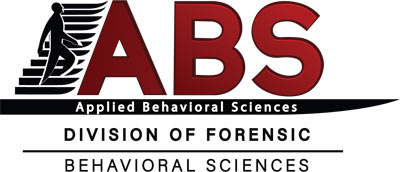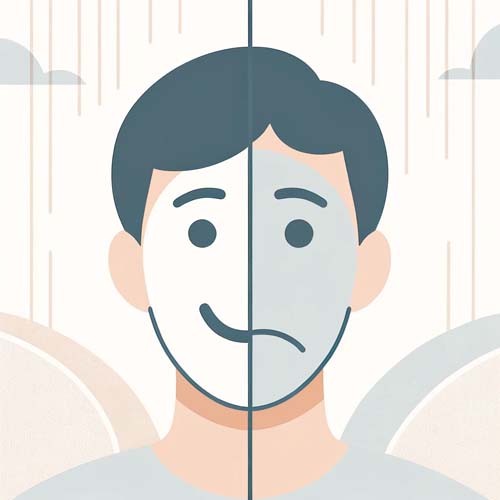
Bipolar Disorder: The Impact of Lifestyle Choices on Manic and Depressive States
Mania and depression are two distinct states often observed in bipolar disorder, each with its unique characteristics and impact on an individual’s behavior, thoughts, and overall functioning. Here’s a detailed analytical description of both:
Mania
Mania is a state of abnormally elevated, expansive, or irritable mood and energy levels. It’s more than just feeling extremely happy or upbeat; it’s a profound alteration in mood and behavior that goes beyond normal bounds and can severely impact daily functioning.
Characteristics:
– Elevated Mood: This can manifest as excessive happiness, euphoria, or extreme irritability.
– Increased Energy and Activity Levels: A marked rise in goal-directed activity or physical restlessness.
– Rapid Thought and Speech Patterns: Jumping quickly from one idea to another (flight of ideas) or experiencing ‘pressured speech’ where talking fast feels compulsory.
– Decreased Need for Sleep: Feeling rested after only a few hours of sleep.
– Grandiosity: Inflated self-esteem or grandiose beliefs about one’s abilities.
– Impaired Judgment: Engaging in risky behaviors without considering the consequences, like reckless driving or impulsive financial decisions.
– Distractibility: Easily pulled off task or unable to focus.
– Psychosis (in severe cases): Losing touch with reality, experiencing delusions or hallucinations.
Impact:
– Manic episodes can severely disrupt life, straining relationships, work performance, and leading to dangerous situations. Despite the initial ‘high,’ the aftermath often includes significant personal and professional consequences.
Depression
Depression, on the other hand, is characterized by a pervasive low mood, loss of interest or pleasure in almost all activities, and a range of other cognitive and physical symptoms.
Characteristics:
– Persistent Sadness or Emptiness: An overwhelming feeling of gloom or despair.
– Anhedonia: Loss of interest or pleasure in activities once enjoyed.
– Fatigue or Loss of Energy: Feeling tired almost all the time.
– Feelings of Worthlessness or Guilt: Disproportionately blaming oneself for various faults or failures.
– Changes in Appetite and Sleep Patterns: Significant weight loss or gain, insomnia, or hypersomnia.
– Difficulty Concentrating: Struggling to focus, remember, or make decisions.
– Psychomotor Agitation or Retardation: Noticeable restlessness or slowing down of physical movements.
– Recurrent Thoughts of Death or Suicide: Persistent thoughts about death, suicidal ideation, or suicide attempts.
Impact:
– Depression can be debilitating, affecting every aspect of life. It can lead to social withdrawal, deteriorating performance at work or school, and serious health complications.
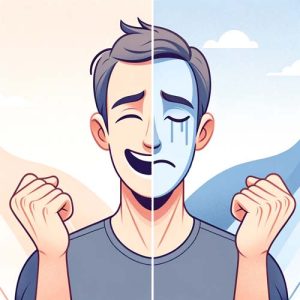
In bipolar disorder, an individual may cycle between these two states, experiencing the extreme highs of mania and the crushing lows of depression. Each phase brings its challenges and risks, necessitating a comprehensive treatment approach that often includes medication, therapy, and lifestyle adjustments. Understanding the distinct nature of mania and depression is crucial in managing bipolar disorder effectively and helping those affected lead stable, fulfilling lives.
Bipolar disorder, a complex psychiatric condition, is characterized by dramatic mood swings between manic and depressive states. These mood swings are not just emotional responses but are deeply rooted in the brain’s chemistry. Understanding the impact of daily habits, such as caffeine consumption in the morning and alcohol intake at night, on these mood swings is crucial in managing bipolar disorder.
The Role of Caffeine and Alcohol
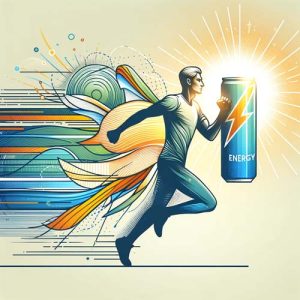 Caffeine, a known stimulant, can potentially trigger a manic state in individuals with bipolar disorder. Consuming caffeine in the morning might provide a burst of energy and elevated mood, simulating a manic phase.
Caffeine, a known stimulant, can potentially trigger a manic state in individuals with bipolar disorder. Consuming caffeine in the morning might provide a burst of energy and elevated mood, simulating a manic phase.
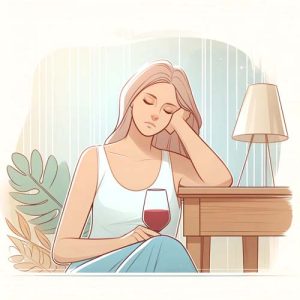 Conversely, alcohol, a depressant, consumed in the evening, can lead to feelings of sadness or lethargy, mirroring a depressive state. While these substances don’t cause bipolar disorder, they can exacerbate its symptoms, making mood swings more pronounced and challenging to manage.
Conversely, alcohol, a depressant, consumed in the evening, can lead to feelings of sadness or lethargy, mirroring a depressive state. While these substances don’t cause bipolar disorder, they can exacerbate its symptoms, making mood swings more pronounced and challenging to manage.
Gambling and Bipolar Disorder
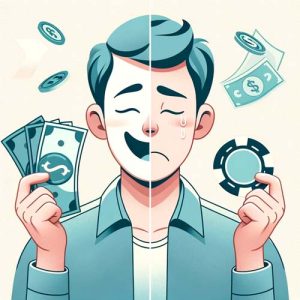 Gambling behavior provides an interesting lens to view bipolar disorder. The thrill of winning can mimic the euphoria of a manic episode, while the despair of losing can plunge an individual into a depressive state. This similarity raises questions about the nature of bipolar disorder – is it just an extreme version of the highs and lows everyone experiences? The key difference lies in the intensity and impact of these mood swings on an individual’s life, often requiring medical intervention.
Gambling behavior provides an interesting lens to view bipolar disorder. The thrill of winning can mimic the euphoria of a manic episode, while the despair of losing can plunge an individual into a depressive state. This similarity raises questions about the nature of bipolar disorder – is it just an extreme version of the highs and lows everyone experiences? The key difference lies in the intensity and impact of these mood swings on an individual’s life, often requiring medical intervention.
Other Behaviors and Emotional Responses
People with bipolar disorder may exhibit other behaviors that align with their mood states. During manic phases, they might engage in risky or impulsive activities, while depressive states can lead to withdrawal and disinterest in previously enjoyable activities. It’s important to understand that these behaviors are symptoms of the disorder, not personal choices.
Treatment and Management
The treatment of bipolar disorder often involves medication to stabilize mood swings. However, lifestyle modifications, such as regulating caffeine and alcohol intake, maintaining a regular sleep schedule, and engaging in stress-reducing activities, can be equally important. Recognizing and adjusting these behaviors can provide significant relief and contribute to overall stability.
Bipolar disorder is a complex condition that affects individuals in various ways. While lifestyle choices like caffeine and alcohol consumption or gambling behaviors can influence mood states, they are not the sole cause of the disorder. Effective management includes a combination of medical treatment and lifestyle adjustments. By understanding and respecting the impact of our daily choices on our mental health, we can take proactive steps towards stability and wellness.
 Here’s a list of other behaviors that can create extreme differences in mood, particularly for individuals with mood disorders such as bipolar disorder:
Here’s a list of other behaviors that can create extreme differences in mood, particularly for individuals with mood disorders such as bipolar disorder:
- Substance Use: Beyond caffeine and alcohol, the use of drugs like cocaine, amphetamines, or even certain prescription medications can induce mood swings.
- Sleep Patterns: Drastic changes in sleep patterns, such as staying up all night or sleeping excessively, can lead to significant mood shifts.
- Physical Activity: Both the lack of exercise and extreme over-exertion can affect mood. Regular moderate exercise tends to stabilize mood, while its absence or extremes can cause fluctuations.
- Dietary Habits: Consumption of high-sugar, high-fat, or heavily processed foods can affect mood. Conversely, sudden dieting or fasting can also have mood-altering effects.
- Social Interactions: Intense social activities or social isolation can lead to mood swings. For some, overwhelming social engagements can induce stress or euphoria, while loneliness can contribute to depressive states.
- Stressful Events: Exposure to high-stress situations, whether positive (like a job promotion) or negative (such as loss of a loved one), can trigger extreme mood changes.
- Seasonal Changes: Some individuals experience mood shifts with changes in seasons, a condition known as Seasonal Affective Disorder (SAD).
- Overworking: Engaging in long hours of work without adequate breaks can lead to stress and subsequent mood swings.
- Screen Time: Excessive use of screens, especially before bedtime, can disrupt sleep and mood patterns.
- Shopping or Spending Sprees: For some, compulsive shopping can lead to a temporary high, followed by guilt or depression, especially in the context of financial strain.
It’s important to note that while these behaviors can affect mood, they do not necessarily cause mood disorders. However, for individuals with conditions like bipolar disorder, these behaviors can exacerbate symptoms or trigger mood episodes. As always, moderation and balance are key, and professional guidance is recommended for managing mood disorders.
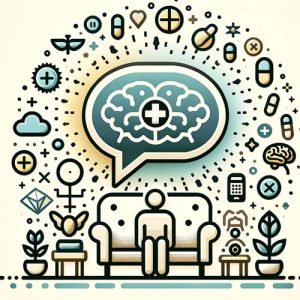 Bipolar disorder is typically managed with a combination of medications, psychotherapy, and lifestyle changes. The most commonly prescribed medications for bipolar disorder fall into several categories, each working in different ways to help stabilize mood and reduce the severity of symptoms:
Bipolar disorder is typically managed with a combination of medications, psychotherapy, and lifestyle changes. The most commonly prescribed medications for bipolar disorder fall into several categories, each working in different ways to help stabilize mood and reduce the severity of symptoms:
- Mood Stabilizers – Lithium: One of the oldest and most widely used mood stabilizers. It helps to reduce the severity and frequency of mania and can also help alleviate depressive episodes. The exact mechanism of action is not fully understood, but it’s believed to affect the flow of sodium through nerve and muscle cells in the body, influencing the excitation or mania.
– Anticonvulsants: Medications like valproate (Depakote), lamotrigine (Lamictal), and carbamazepine (Tegretol) are also used as mood stabilizers. Originally developed to treat seizures, these drugs can help stabilize mood swings in bipolar disorder. They are thought to work by affecting neurotransmitters in the brain, thereby stabilizing mood.
- Antipsychotics – Atypical antipsychotics, such as olanzapine (Zyprexa), risperidone (Risperdal), quetiapine (Seroquel), aripiprazole (Abilify), and lurasidone (Latuda) are often used, especially when symptoms of mania or mixed episodes are prominent. These medications can help control symptoms like delusions or hallucinations. They work by affecting various neurotransmitters in the brain, including dopamine and serotonin.
- Antidepressants – While antidepressants are sometimes used to treat bipolar depression, they must be used cautiously as they can sometimes trigger a manic episode. They are often prescribed in combination with a mood stabilizer or antipsychotic. Selective serotonin reuptake inhibitors (SSRIs) like fluoxetine (Prozac) and sertraline (Zoloft) are common choices.
- Antidepressant-Antipsychotic – The combination drug fluoxetine-olanzapine (Symbyax) combines the antidepressant fluoxetine and the antipsychotic olanzapine. It works by targeting both serotonin and dopamine neurotransmitters in the brain, and is used to treat depressive episodes associated with bipolar I disorder.
- Calcium Channel Blockers – Though less commonly used, some calcium channel blockers like verapamil, typically used to treat high blood pressure, may have mood-stabilizing effects.
- Benzodiazepines – Short-term use of benzodiazepines can help with sleep or anxiety. However, they are generally not used long-term due to the risk of addiction.
It’s important to note that the effectiveness and side effects of these medications can vary greatly from person to person. Treatment is often highly individualized, requiring careful monitoring and adjustments by a healthcare professional. Additionally, the exact mechanisms of how some of these medications work in bipolar disorder are not entirely understood and are the subject of ongoing research.
 Cognitive Behavioral Therapy (CBT) is a widely used therapy technique for a variety of mental health conditions, including bipolar disorder. It focuses on identifying and modifying negative thought patterns and behaviors to improve mood and functioning. Some effective CBT strategies for bipolar disorder include:
Cognitive Behavioral Therapy (CBT) is a widely used therapy technique for a variety of mental health conditions, including bipolar disorder. It focuses on identifying and modifying negative thought patterns and behaviors to improve mood and functioning. Some effective CBT strategies for bipolar disorder include:
- Mood Monitoring: Keeping a daily record of moods, sleep patterns, and life events, which can help in identifying triggers and patterns associated with mood swings.
- Cognitive Restructuring: Learning to recognize and change distorted or negative thought patterns that can contribute to emotional and behavioral problems.
- Stress Management: Developing coping strategies to manage stress, which can often trigger or exacerbate bipolar episodes.
- Problem-Solving Skills: Enhancing the ability to effectively solve problems that arise, which can reduce the stress and helplessness that sometimes accompany bipolar disorder.
- Lifestyle Management: Assisting individuals in establishing a healthy routine, including regular sleep patterns and balanced activities, which can help stabilize mood swings.
- Interpersonal Skills: Focusing on improving relationships, which can be strained by the symptoms of bipolar disorder, and developing better communication and conflict-resolution skills.
- Relapse Prevention: Identifying early signs of mood episodes and developing strategies to manage them effectively.
These techniques are typically used in conjunction with medication and other treatments under the guidance of a mental health professional. If you or someone you know is struggling with bipolar disorder, it’s important to seek professional help.
Related Posts
Anger Prevention Series – Ep 3 Feel What’s Real – Don’t Mask Emotions with Anger
https://youtu.be/kwq69lMwF9I?si=Aa2dG4lfHXw0fYWD Anger often looks...
Anger Prevention Series – Ep 1 Belief Systems That Fuel or Prevent Anger
https://youtu.be/k3Bk0GZQyD4?si=Edm5W7k_ogZUWhro Most people think...
